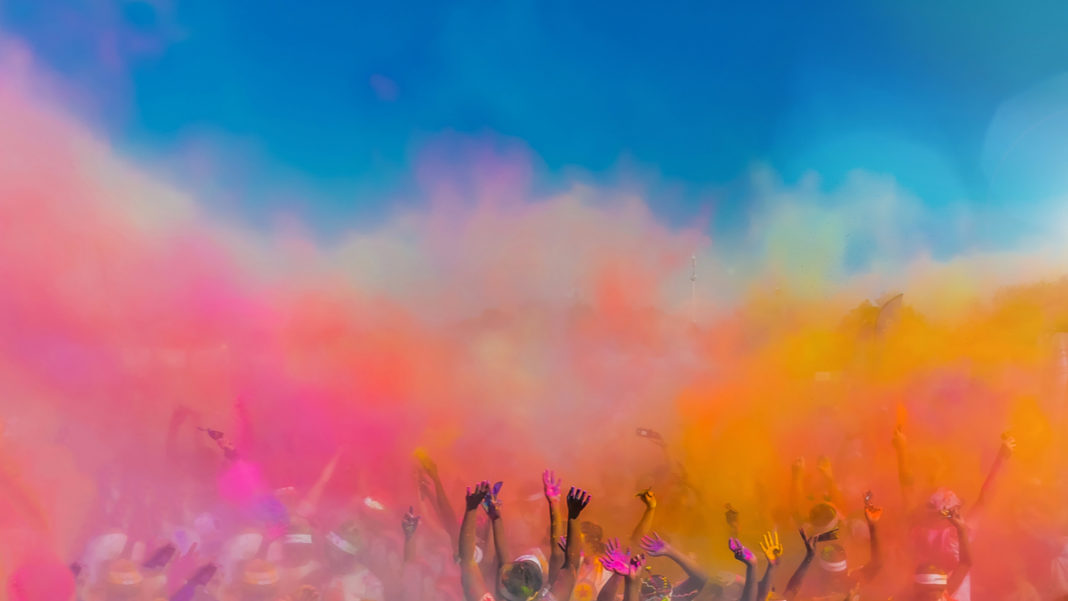The festival of Holi is celebrated all over India, but it is most popular in the northern states of Uttar Pradesh and Bihar. Holi is a Hindu festival that marks end of winter and the beginning of spring, and it also celebrates Krishna, who was a Hindu god. The festival lasts for two days, with the first day being called Dhuleti (or Dhulandi) and the second day being called Choti or Chota Dhuleti. On eve of Holi, people prepare themselves by putting on new clothes and smearing their bodies with colours to welcome Krishna, who will be visiting them on this day. Indian Holi starts when people throw coloured powder and playfully chase one another around.
Significance of Holi in India
Holi in India has a great mythological significance. The fable of Prahlad and Hiranyakshyap is the most famous. According to mythology, once there lived a devilish and powerful monarch named Hiranyakshyap, who regarded himself as a god and demanded everyone to worship him. Prahlad, his son, began to worship Lord Vishnu, much to his chagrin. Hiranyakshyap urged his sister, Holika, to enter a burning fire with Prahlad in her lap because she was blessed with a power that enabled her to enter fire undamaged, to get rid of his kid. According to legend, Prahlad was saved because of his unwavering devotion to the Lord, whereas Holika paid the price for her dark ambition. This mythology is mainly responsible for the ritual of burning Holika, also known as the ‘Holika Dahan.’
Holi also commemorates the narrative of Radha and Krishna, which portrays Krishna’s ecstasy at the prospect of smearing colour on Radha and the other gopis. Krishna’s prank later turned into a trend and a feature of the Holi celebrations.
This Holi colour has excellent biological significance, but it also has amazing skin benefits. As per our ancestors, Abeer (powdered colour) has great benefits for our skin and is naturally made, and Abeer is suitable for our skins. Also, the liquid Holi colour is thought to infiltrate the body and enter the pores.
Whether for mythological significance or biological benefits, Holi should be celebrated regardless of any reason. Indeed, it will enhance your mood and be suitable for your mind.
Why is Holi celebrated?
Holi is a celebration mainly for Hindus, and its significance is based primarily on India. Holi is a festival of colours, joy, happiness, love, and togetherness. Therefore, nowadays, Holi is also celebrated in many places worldwide. This festival brings people together and gives them a chance to enjoy a day from their daily busy life to enjoy with colours. The festival of Holi marks the beginning of spring, the end of winter, and the blossoming of love. And it is a celebratory day for many to meet new people, laugh and play, forgive and forget, and mend broken relationships. The celebration also marks the start of a successful spring crop season.
Therefore, you can understand that Holi is definitely a very essential and important festival that has deep-rooted traditions in it. Its cultural significance is immense to say the least.
Also Read: History of Dhanteras: Popular Legends of Wealth and Grandeur
Daniyel Chatterjee is a Young Researcher in the field of Data Science & Analytics having research experience of more than 8 years. He has a Masters in Computer Engineering and currently serves as an Editorial Assistant in IGI Global, United States of America. Daniyel also holds honorary positions in the Associate Member of Institute of Research Engineers and Doctors, International Association of Computer Science and Information Technology, International Association of Engineers, Society of Digital Information and Wireless Communications.


